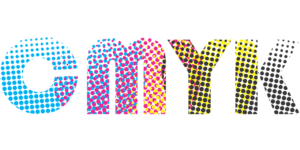

Революция в индустрии трафаретной печати благодаря передовым технологиям и качественному обслуживанию
Anatol Equipment Manufacturing Co.
1429 S Shields Dr
Waukegan, IL 60085


Революция в индустрии трафаретной печати благодаря передовым технологиям и качественному обслуживанию
Anatol Equipment Manufacturing Co.
1429 S Shields Dr
Waukegan, IL 60085

Unlike a typical four color print, in which the colors are clearly divided, four color process involves printing wet-on-wet with colors overlapping so they mix and create thousands of different tones.
Four color process screen printing takes some additional time, knowledge and setup, but screen printers who offer four color process printing are rewarded with beautiful prints that can wow customers. You’ll need to take careful steps as you choose and color-separate your artwork, choose the right substrate, set up your screen printing machine and print your images.
While all good screen printing begins with good artwork, quality artwork becomes even more important when printing a four color process. It’s imperative that you use a high-resolution image for your four color process jobs. In fact, many screen printers will use oversized images to achieve the level of detail they need for these screen printing jobs.
When separating the colors for your screens, you’ll need to change some of the settings in your separation program, as most programs default to settings ideal for printing on paper. First, you will need to make sure your color separation is set to CMYK. You also will need to verify that the cyan, magenta, yellow and black formulations used by your program line up with your inks. Some ink companies offer plugin files that will sync the colors in your graphics program with their ink colors.

The four CMYK colors — cyan, magenta, yellow and black — are
combined to create beautiful results with four color process printing.
You also will need to adjust screen angles for each color in the following range: 5 percent for yellow, 55 percent for cyan, 22 percent for magenta and 80 percent for black. The most common line count used for screen printing is 26.6 lines per centimeter. Halftone dots need to be set between 15 and 85 percent density. Finally, the dot shape will have to be adjusted; the elliptical shape is usually used in screen printing, as it works well within the squares created by the screen mesh.
In four color process screen printing, the substrate matters. Four color process printing is recommended for light — usually white or cream-colored — garments, as the different color variations do not stand out on dark garments. However, it is possible to print a good four color process image on a dark substrate with a white underbase, but it is not commonly done. Your chosen substrate should have a tight weave so that the individual dots have a surface on which to print; though you do need to be wary of heavy-duty materials woven of thick threads, as they can interfere with the detail of the half-tone dots.
Four color process work is incredibly detailed. Because of that, you will be laying down the finest coating of each ink color, and your screen printing machine setup will reflect that. Four color process screen printing requires densely woven screens, and most experienced screen printers recommend using 305 mesh count, or even slightly higher. The point weave, or thickness of the mesh, also should be fine — 34 micron is a good rule of thumb for a 305-count screen.
It’s also crucial to make sure that your screen tension is adequate. Loose screens budge during printing, rather than snapping cleanly away from the ink, causing blurring and improper color mixing. The screen tension should be around 25 Newtons per square centimeter; screen tension should not be less than 22 or more than 30.
The right squeegee goes a long way
towards getting great four color process results!
Because you are laying down a light layer of half tones with four color process screen printing, you want to create as little off-contact distance as you can. An off-contact distance of 0.040 inches is recommended. A 70- to 75-durometer squeegee should be used to create a good ink shear, and the squeegee and flood bar angles on your screen printing machine should be set to around 15 degrees.
When it comes time to print your four color process job, you will print from the lightest color to the darkest, so your color order will be yellow, magenta, cyan, black. If you are printing with a white underbase, you will print that first. Because the goal with four color process screen printing is to have the ink colors blend to create a myriad of tones, you will print wet-on-wet. There is no flashing between colors, unless you are printing a white underbase, and in that case, only the underbase is flash cured.
The biggest challenge in four color process screen printing is laying down the same amount of ink on each substrate to create consistent images. Because of that, automatic screen printing machines work best for four color process printing. However, it can be done successfully on a manual screen printing press, but you must be careful to use only one print stroke per color, and the ink must be lifted and not allowed to retouch the stencil once the print has been made. To lay down only a light layer of ink, use a gentle print stroke with the squeegee at a low angle.
Your first four color process job can provide your shop with a major challenge, but by using quality artwork and the right garment, and by setting up and carrying out your screen printing process carefully, you will be awarded with a beautifully detailed screen print. Looking for the right equipment to get started? Let’s talk screen printing!
Your message was successfully sent!